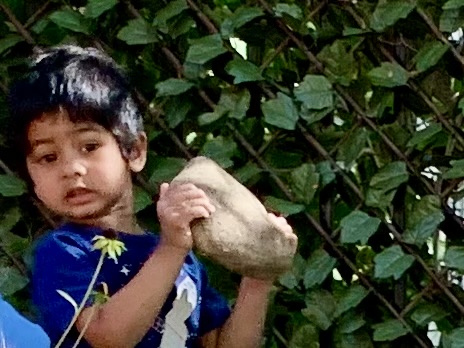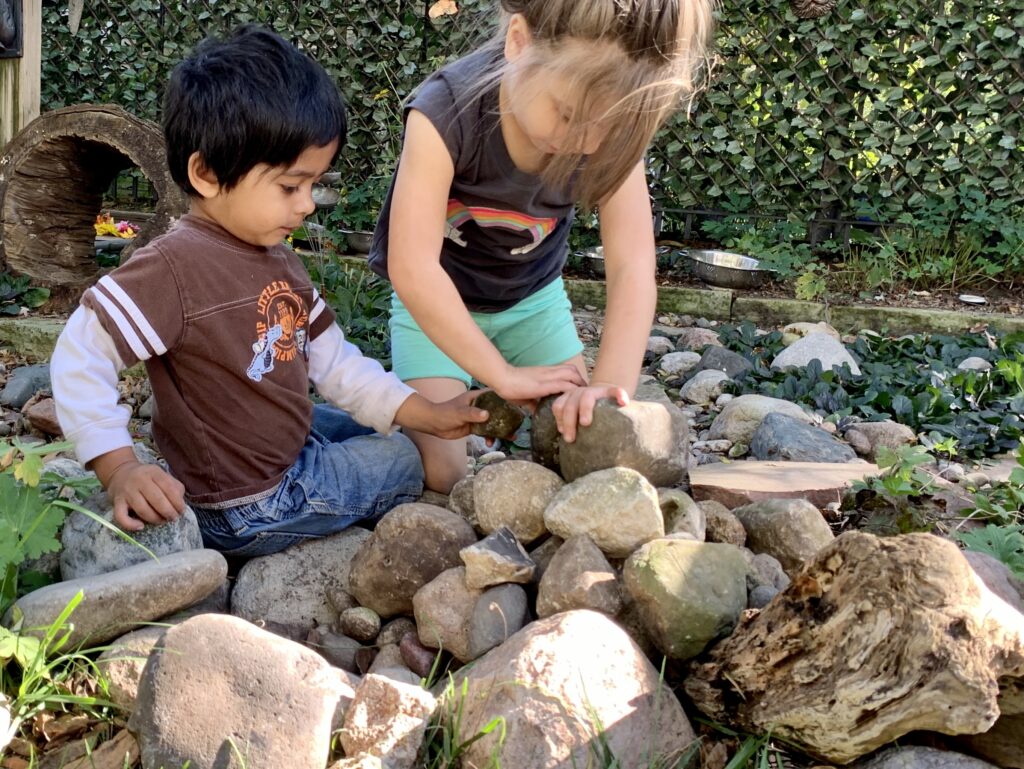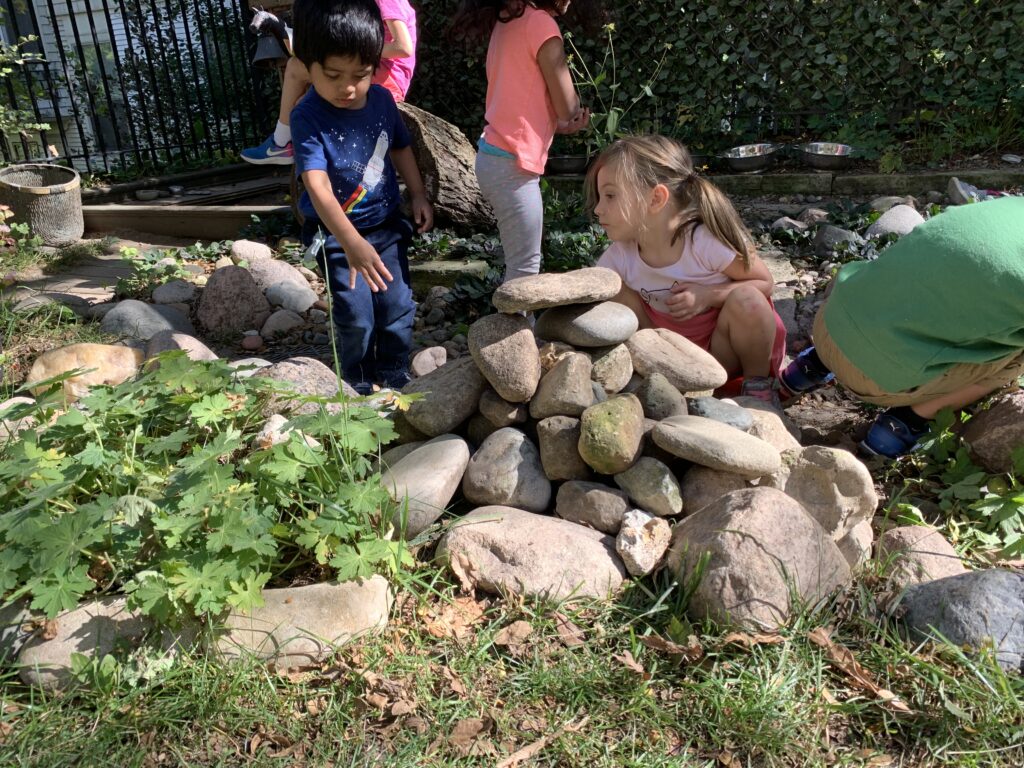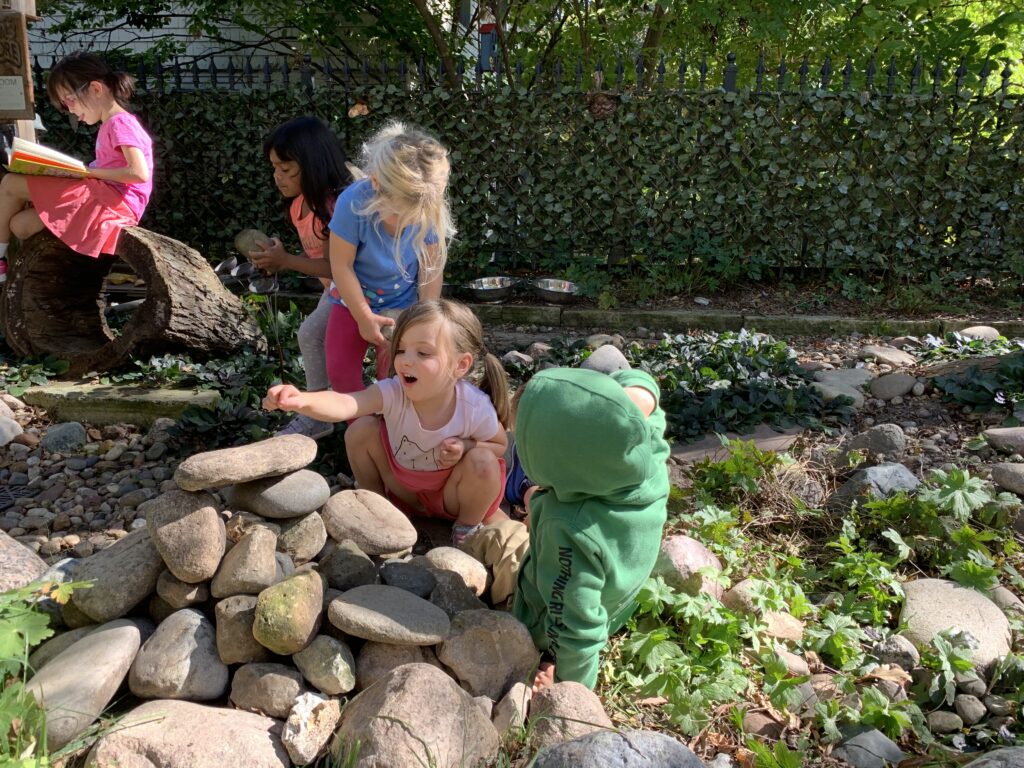Building Brains and Muscles Through STEM Play

“Thalhah, can you bring me that rock over there? I think it is just the right size we need.” Noelle points to a long, narrow golden rock.
“Okay, but this rock is really heavy!” Thalhah grunts as he carefully lifts the large river rock from one area of our rain garden and carries it over to Noelle.
“Oh, wow! I didn’t know it was that wide!” Noelle muses. “It may not be the right rock. Just put it down over here and we’ll find a better place for it in a while. I think we need a shorter one.”
“What are you building?” I ask.
“We are just stacking rocks to make a tower,” Noelle responds, giving me a worried look as if she’s wondering if I’ll tell her to stop.
“Cool!” I reply. Her smile returns and the building continues.
Building a rock tower may seem like a simple activity, but it offers a wealth of opportunities to build rudimentary science, technology, engineering, art, and math (STEAM) skills. What looks like simple child’s play has enormous benefits for the brain and body!
Proprioception (the body’s ability to sense movement, action and location) is often called our sixth sense. Proprioception results from sensory receptors in our nervous system and body. Most of the receptors are located in our muscles, joints and tendons. These receptors process sensory information when we move our bodies. When we walk, run, lift, or carry objects, the stretching of our muscles and the movement of our joints sends proprioceptive feedback to the brain. This lets our brain know where our arms, legs and other body parts are at any given moment, which is important for balance and coordination. Lifting, carrying, pushing, and pulling all build our proprioceptive input. Proprioception provides calming and regulating input to the nervous system, which is a key to self-regulation.

I watch as Noelle and Thalhah discuss and judge each rock to determine where it will fit best. They are sharing ideas about balance and stability, enhancing their spatial awareness, and gaining a better understanding of geometric concepts such as shape and size.
“Can we help?” Some other young friends have joined in, and the activity becomes even more collaborative. Suddenly, we have encouragement, communication, cooperation, and teamwork as the children share ideas, take turns and problem-solve.
“Aughhh!” I hear screams as the rocks shift and a few tumble off of the tower and back into the rain garden.
“We put too many rocks on that side, I think,” Joshua hypothesizes. “Let’s try putting one rock on this side, one in the middle, and then one on the other side.”
The children are guessing, predicting and classifying as they apply early algebra, the scientific method and basic engineering design. This morning of play is strengthening their understanding of these concepts. Hands-on learning enables children to take their understanding to a deeper level so that they can analyze the information they collect and then apply this knowledge in their future endeavors.

Our rain garden often sets the stage for loose-parts play. We took advantage of funds from our city’s Rain Garden and Rain Water Runoff Program to turn a dry and eroded creek bed into an outdoor laboratory with native plants and pollinators.
Small and large river rocks make up the border and layers of the dry creek bed and add to the peaceful beauty of this soothing play space. Check with your local city, county or state agencies to see if they have a similar stormwater runoff or rain garden program. It’s a win-win situation for you, your community and the environment.
Children learn so much through play. By creating a play space that offers so many STEAM benefits, you’ll be able to take your outdoor science and math curriculum to a new level.
Building brains, muscles and a STEM tower with your friends makes learning (and teaching!) fun!

Thanks
Great ideas for those who want to use their muscles.